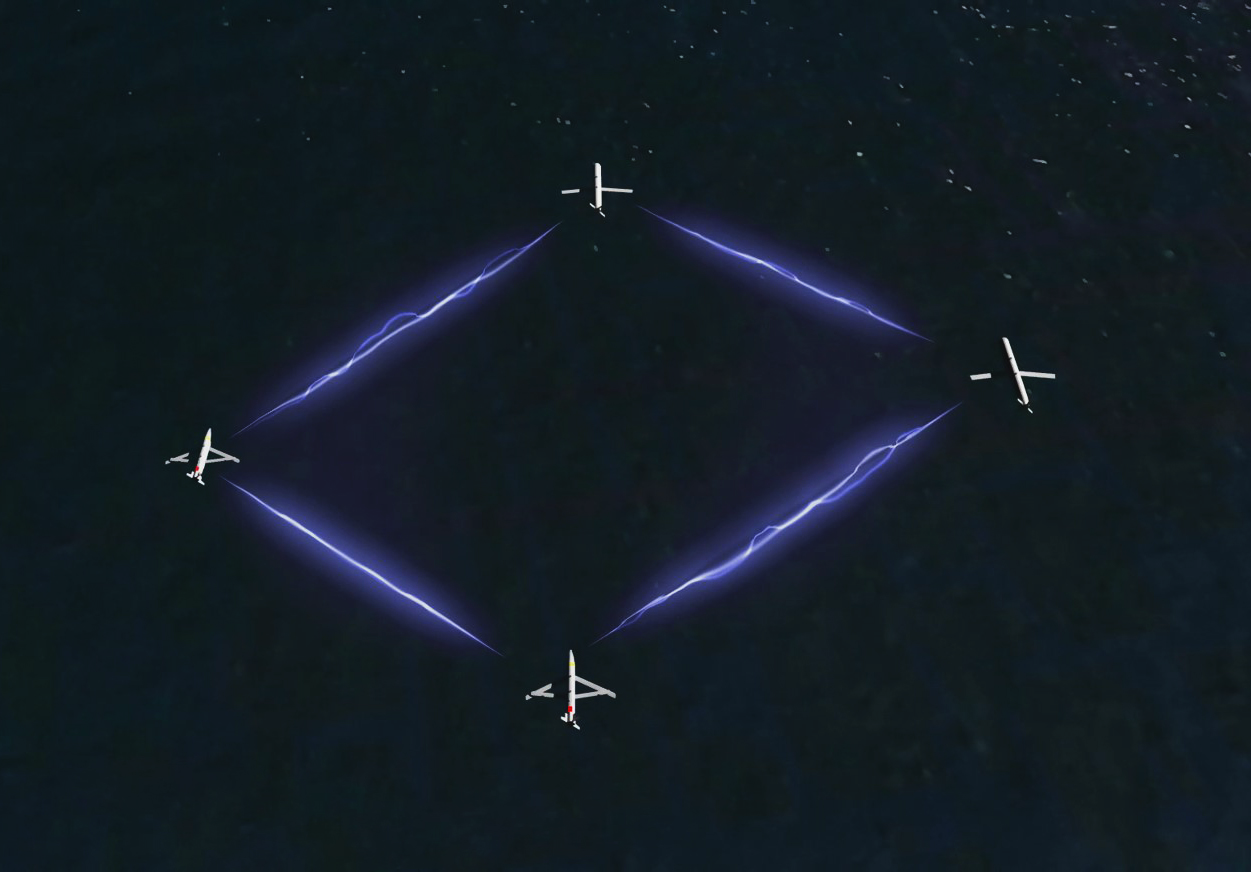AFRL, Defense Innovation Unit launch new phase of Golden Horde Vanguard program
EGLIN AIR FORCE BASE, Fla. (AFRL) – A collaborative effort called Operation Protovision is unveiling a new competitive phase of the Department of the Air Force’s Golden Horde Vanguard program. Launched by the Air Force Research Laboratory, Defense Innovation Unit and Johns Hopkins Applied Physics Lab, the new live and virtual components allow a variety of competitors to showcase technologies in a Golden Horde Colosseum where so-called gladiators compete.
This virtual environment, a digital engineering pipeline that encompasses software, hardware-in-the-loop and surrogate UAVs, aims to rapidly integrate, develop and test transformational networked, collaborative, and autonomous, or NCA, weapon capabilities and air platform technologies for future warfighters.
“Virtual competitions that identify the best gladiators allow rapid innovations to be tried out, almost as fast as the scientists and engineers can think of them,” says AFRL Munitions Directorate Director Col. Tony Meeks. “With help from our cohorts at DIU, APL and industry, the AFRL Munitions Directorate has kicked our ability to accelerate change to address strategic competitions across the globe into high gear,” he said.
DIU recently awarded contracts to six gladiators through its Commercial Solutions Opening including Autonodyne, EpiSci, L3Harris, Lockheed Martin, Shield AI, and Systems & Technology Research while Georgia Tech Research Institute and an AFRL government team round out the field.
“DIU is helping to provide commercial solutions at speed to this next step of the Protovision process,” said Michael Seltzer, DIU program manager. “This cutting edge technology will allow the systems to process far more information with more precision and speed, increasing both effectiveness and efficiency, and thus achieving the desired results while reducing unnecessary cost to all sides.”
Protovision, the initial colosseum simulation event, uses a process similar to that of Defense Advanced Research Projects Agency’s AlphaDogFight Trials. This new competitive and virtual approach allows AFRL and PEO Weapons to rapidly test and assess traditional and non-traditional gladiators simultaneously, demonstrate early capabilities and initialize development of long-term simulations, architectures, and environments needed for NCA weapon technology advancement and acquisition. While primarily focused on weapons, these capabilities could also enable a host of other air platforms.
“Providing innovators and warfighters the ability to ‘try before they buy’ to rapidly assess and refine new ideas is key to increasing the speed and efficiency at which we deliver superior technologies,” said Meeks.
Golden Horde focuses on examining weapons concepts in realistic operational scenarios and assessing each weapon’s survivability, effects and ability to provide military combat effects across large, contested areas even with severely degraded connectivity. The Vanguard program began in December 2020 by completing the first ever flight demonstration of NCA technology on DAF inventory weapons followed by progressively more complex demonstrations in 2021.
During these demonstrations, Golden Horde weapons established and utilized a secure communication network to synchronize impacts on targets, fly in formation to negate counter-air threats, react to a new target update from a ground station and effectively strike the established prioritized targets.
Golden Horde, which employs semi-autonomous capabilities to operate without human control ultimately enables weapons to react to changes in the environment as well as losses and degradations in their own systems. Although these systems can operate without direct human control, they only engage targets or specific target groups previously selected by a human operator as part of the mission planning process. Vanguard programs are top priority DAF initiatives that focus on revolutionary warfighting concepts. In this program, transformational capabilities seek to connect weapons to larger warfighting networks.
For now, Protovision competitions occur quarterly with the winners conducting live flight demonstrations on UAVs in 2022. The long-term goal is to conduct competitions via agile timelines, further accelerating innovation.

An artist’s rendering of networked, collaborative and autonomous weapons, with each communicating with the others. (U.S. Air Force illustration/Chris Quinlan)
